An Example Pharma Marketing-Technology Stack
Essential components: What a “marketing-technology stack” might look like in the B2B pharma sectors.
Behind the personalised emails, downloadable content and location-enabled media is usually a suite of interchanging, complex technologies.
Marketing technology reached new heights in 2015. Martech found that 51% of organisations use 21 or more marketing-technology solutions. Since then, the sheer amount of technologies available has grown and grown.
These technologies combine to form a stack that marketers use to efficiently and effectively execute marketing activities across channels. This stack will include all the technologies you might use on a day-to-day basis, but you may not see them as an integrated toolbox, rather stand-alone tools. There might also be some essential technologies missing from your current stack which could greatly benefit your marketing campaigns.
This post will look at marketing-technology categories, how these technologies can share common features and how they can be better grouped into a manageable stack. A pharma marketing-technology stack might look something like the below.
Subscribe for marketing insights via email
Example pharma marketing technology stack.
1. CUSTOMER RELATIONSHIP MANAGEMENT (CRM) SYSTEM
At the heart of any B2B pharma marketing, sales or business development activity is a CRM. A CRM system manages an organisation’s customers/clients, prospect and contacts to improve relationships for customer retention and drive sales growth. Modern CRM systems, often integrated with other technologies, use data analysis about the contact’s previous interactions - such as previous calls, meeting and website actions/movements - with an organisation.
Every B2B pharma organisation will have a CRM system, and quite frankly, it cannot operate without one. But organisations will often use a CRM simply to store large quantities of data that cannot be used for any commercial gain. Managed effectively, CRM systems can uncover opportunities to cross-sell and better serve clients and prospects which can provide cost savings with increased revenue. Some of the most popular CRM systems include Salesforce, Pipedrive and Microsoft Dynamics but there are many CRM options available depending on specific needs. Without a CRM, a marketing campaign will have no hope of succeeding.
2. CONTENT MANAGEMENT SYSTEM (CMS)
With a CRM in place, the organisation requires a website and all websites sit on a primary technology foundation in the form of a CMS (content management system). A CMS is a software application used to manage the creation and modification of digital content on that website.
Successful digital campaigns, using content such as blog posts, news articles, product/service summaries and case studies from that website, require organisations to not only understand behavioural data about the content but also personal data specifically about who is engaging with that content. Therefore, a CMS must be fully integrated with a CRM system. Popular CMS platforms include WordPress, Squarespace and Sitecore, and many of these systems offer website design and build features.
3. MARKETING AUTOMATION PLATFORM
With a CRM and CMS in place, it’s now essential to connect the platforms so when a piece of content from the website is distributed to its audiences, it can be tracked back to a contact within the CRM, or a new contact within the CRM can be created automatically via a form. The missing piece here is the marketing automation platform, which can often emerge as missing in the pharma marketing-technology stack due to the complex nature of the technology. Now is the time to change if this is the case because they are becoming easier to understand and use.
Marketing automation (or inbound marketing) platforms have become increasingly popular in the last five or so years, with their ability to help marketing departments effectively market on multiple channels online and automate repetitive tasks. Key features include the ability to generate leads via forms and landing pages, communicate with those prospects via automated email marketing campaigns and then report on the status of those prospects within the CRM. Marketing automation platforms also offer basic analytics packages that can track such campaigns on a basic level, generally to score the leads generated. Popular marketing automation technologies include HubSpot, Marketo and SharpSpring.
4. ANALYTICS
As previously mentioned, your CMS and marketing automation technologies will have built-in analytics software that can tell you a little about what is happening on your website and how your marketing campaigns are performing. But for the most, they won’t tell you enough, and you could access a world of additional data that could help shape your campaigns or improve performance. Therefore, you will need an analytics package to add to your pharma marketing-technology stack.
Google Analytics is the leader, and since it and its suite of other tools such as Google Search Console, Google Trends and other in the wider Google Marketing Platform are all free, it’s suggested that you do not look elsewhere. As a summary, Google Analytics tracks and reports on website traffic and dives deeper into activity such as pages per session, session duration and bounce rate along with the sources of the traffic, along with a host of other features. It pays to know what’s happening on your website so you can focus your efforts on areas that are working, addressing those which aren’t quite as so in the process.
5. INTELLIGENCE
So, we know how our website and web pages are performing. We also have an idea about the campaigns that have been working previously. But what we don’t have is data on external factors that can direct and shape the campaigns we undertake. Intelligence platforms and technologies, that integrate with current technology stacks, provide this information helping you make choices on those campaigns.
Should you be looking to embark on search engine optimisation campaigns on an on-going basis, investing in SEMrush which identifies market trends and industry best practices would be a suitable intelligence option. Should you want to identify your prospects’ technology choices you might invest in Datanyze or if you want to keep an eye on your clients' and competitors' website traffic volumes, referral sources and website "stickiness" you may want to invest in SimilarWeb. There are many of such intelligence and marketing tools, and many of them offer free versions of those products and/or browser extensions so you can start using some of those features. If you conduct digital campaigns of any sort, you will require at least one of them.
6. SALES ENABLEMENT
Stepping out of the traditional marketing team and into the sales team… where a CRM system along with technology that can help nurture and qualify leads is already in place. But the sales representative might need his or her own specific technologies to effectively close prospects and make sales, that also need to be integrated with other marketing technologies so that the wider commercial team can have visibility of progress.
Again, at this top layer on our technology stack, many different types of technologies and resources are available. Sales representatives might require LeadForensics which tells them exactly who has been on the organisation’s website and they may also want RingDNA to help them with their outbound calls and voice communications, along with a sales-specific productivity platform in Yesware.
7. PROJECT MANAGEMENT
Multiple campaigns and marketing initiatives, as well as managing the above technologies, can be time-consuming and therefore managing them in an effective manner is a must. Project management is the practice of initiating, planning, executing, controlling and closing the work of a team to achieve specific goals and meet specific success criteria at the specified time. Fortunately, there are technologies available also that can integrate with the above to make this happen.
Project management technologies, ranging from time management (Asana, Todoist) to team collaboration (Trello, Slack) to document management (Google Docs, Dropbox), can be adopted to tie up all of your marketing campaign initiatives, as well as the marketing technologies within your stack. It’s worth looking at how efficient you are with your time to help determine what project management tools you require to stay on track and hit your various performance objectives.
MARKETING TECHNOLOGY: A MINEFIELD!
Below is the Martech 5000 which has been referred to as the most frequently shared slide of all time. The slide embodies what the marketing technology landscape looks like for pharma marketers and demonstrates the vast amount of technological choice available… in 2017. But don’t let this slide scare you, many of these providers offer similar solutions and you can soon narrow down those most suitable to your needs.
Again, many of these providers offer free trials and stripped-down versions of their products so you can test them out. Don’t be afraid to do this with all the components of the pharma marketing-technology stack so you can find out which technologies and tools are best suited for your marketing campaigns, organisational objectives and internal processes. Based on the choice, we appreciate that this might take some time but these are tools that, once in your marketing toolbox, will provide a range of outright benefits to your operations.
Look at all seven categories of the marketing-technology stack above, starting at the bottom of the stack, and assess where you and your organisations currently stand.
LIKE WHAT YOU SEE?
For more science marketing ideas and tips to help guide you through the complex scientific landscape, sign up for our newsletter. We deliver articles such as this one, once a month, in our pharmaceutical marketing insights round-up.




